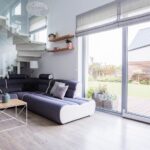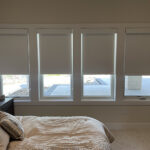This piece on technology and Type 1 Diabetes (T1D) is the third in a series by Michael Maniscalco, co-founder of the remote-network monitoring company Ihiji. Some 30,000 people, including Maniscalco's young son “Z,” are diagnosed with the potentially fatal disease each year. In this segment, Maniscalco discusses his experiences at his first scientific symposium on diabetes, which he attended as a member of the CE Pro press. – Julie Jacobson
After experiencing the impact of Type 1 Diabetes (T1D) on my family, I set out to explore the different medical technologies and topics currently pushing the envelope of patient treatment. So I headed out to the American Diabetes Association Annual Scientific Sessions conference held in San Diego in June (think CEDIA Expo for the Diabetes industry), to immerse myself in a weekend of all things diabetes tech.
My goal was to investigate whether there are opportunities to apply smart-home technology to disease management. I also hoped to understand how the healthcare industry tackles digital security, and how their initiatives might impact IoT and the smart home in general.
Going into the conference, I had done a fair amount of research but coming out I was both encouraged and disappointed by the state of technology. While I found some interesting opportunities the top takeaway was not what I expected.
A Data-Driven Disease
Type 1 diabetes relies heavily on self-treatment and constant attention to data. The good news, if there is such a thing with T1D, is that it is a very data-driven disease.
Treatment involves constantly watching blood sugar levels, counting carbohydrates (which affects blood glucose) and correcting for carbohydrate intake or high blood sugar with insulin.
Once you know how a patient's body reacts to carbs and different doses of insulin you can control the body’s blood sugar by essentially replacing the pancreatic function of glucose and insulin control with a combination of carbohydrates and insulin.
If blood sugar goes low, ingest some carbs, and it comes up. If it goes too high, correct with a dose of insulin. To keep blood sugar in range, when you eat carbs you preventatively correct for them with insulin. So that’s your diabetes crash course. Seems simple enough right?
Unfortunately, there is always more to the picture, but this is where technology can help.
Reliable Home Network is Essential
Today there are a variety of technologies for monitoring blood sugar, delivering insulin precisely, and accurately counting carbs. There are constant glucose monitoring devices (CGMs) that take blood sugar readings every few minutes and send that data to the cloud for analytics and alerting – sound familiar Ihiji fans?
There are pumps that deliver insulin on a regular basis and at meal-time to keep blood sugars in check. Cutting-edge closed-loop systems tie in CGM data to the pump to calculate insulin doses automatically. There are even apps to help you determine how many carbs are in the food you’re eating.
The common trend here is that everything requires constant connectivity and technology to read, process, calculate, analyze and predict treatments. The data on this new-age treatment is extremely encouraging. The challenge, which we all know well, is in managing all of the technology and connectivity 24/7/365.
RELATED: IFTTT Project: Turn on Lights if Blood Glucose Levels are Critical
In fact, one presenter at the ADA symposium spoke of a research project in Minnesota where Best Buy’s Geek Squad was called in to support the trial to ensure the apps, devices, and networks were all playing nicely together.
The parallel for CE Pros is that connectivity is king in the world of smart home tech or home health care tech. You need a solid foundation of a network, installation and configuration support, plus a trained user for the system to function as intended.
As with traditional smart-home applications, medical devices and ecosystems are getting better at collecting and crunching big data and applying machine learning to provide better patient treatment with less human intervention.
A patient or caregiver can use data analytics to identify and prescribe more personalized treatment plans which lead to better outcomes. Here again, a constant and reliable network connection is paramount to ensure the accuracy of the data.
As home-health technology becomes more commonplace – whether for diabetes, cognitive disabilities, normal aging, surgical recovery, or whatever – the network becomes increasingly important.
While some home-technology providers have been reluctant to get into the “healthcare” business per se, there is clearly an opportunity to become a personal technology advisor, solving challenges of app installation, integration, and reliable network connectivity.
Digital Security for Healthcare Technology
Security was a key driver for my attending the ADA Scientific Sessions. I hoped to learn how security best practices in the healthcare industry might impact the smart home or consumer electronics industries. Certainly a security scheme proposed by the medical community would be the gold standard of home networking, right?
Surprisingly, there wasn’t much discussion around security at the conference. The device manufacturers have the luxury of using closed systems with secure and limited control protocols.
In the home-tech integration industry, it’s like going back to the olden days of home automation systems that communicated in tightly controlled ecosystems with limited connectivity to the network or the cloud.
There is a reminder here for consumer electronics manufacturers that controlled access — i.e., more closed architectures — can improve the security of home systems. Limiting remote controls to necessary functions and exposing data only through secured APIs with trusted partners could enhance security.
We have this same discussion all the time when it comes to smart-home technology: be open to integrating with a wide range of third-party devices, or keep to a closed ecosystem with heavily vetted partners?
Today’s “more open” consumer electronics and IoT devices operate in ecosystems with published root passwords and broad-reaching APIs. The more open and universal the communications, the more secure the network must be.
We as an industry must keep these devices behind a firewall, on a secure network, and protected via remote systems monitoring and updates.
No Talk About Voice Control
One conversation I felt was missing from the conference? Voice control for medical management, and integration within the smart home.
For example, in my home, I have programmed my lighting system to turn on my bedroom lights if there is a low-blood-sugar alert in the middle of the night. The lighting control provides an additional alerting mechanism for a condition that, if not addressed, could result in a coma or death.
It would be great to trigger an audible alarm on a certain Alexa which announces the current blood sugar reading and how quickly it is falling while waking you up at the same time. There were a few DIY folks who had connected Alexa to their monitoring tools to allow voice queries into the latest blood sugar reading, but the best option for asking carbohydrate content via a voice-control system is still a native google voice search.
The lack of this technology on display is where the disappointment began to set in. Most of the big medical device companies aren’t as focused on innovation; they move at a highly regulated pace set by the United States Food and Drug Administration (FDA).
It seems the medical community sees smart-home integration as many consumers see it: as a “cool” thing.
In my case – and certainly in the case of many other T1D parents – it can save lives. My phone or smart watch can buzz if Z’s blood sugar reaches dangerous levels. But if I’m sleeping hard, or if I forget to turn up the volume on my devices, I could easily miss an important alert. On the other hand, smart lights, alarms and audio systems tied into constant glucose monitoring devices would ensure I woke up immediately upon an alert. #singfornicole
Unfortunately, because of potential liabilities, regulation and fear of the unknown, the traditional healthcare players don't seem to want to “go there.” That leaves patients and their DIY-oriented friends and family to build out these very important ecosystems, which only enhance the deficient warning systems currently provided by the medical community.
Thus, this vital integration work remains solely in the hands of the makers.
It might be interesting for an organization like CEDIA, the trade group for home-technology integrators, to work with lawyers and insurance providers to mitigate the risk installers might face if they install enhancements – like robust networks and third-party integration – for home healthcare and aging-in-place applications.
There might also be an opportunity for a purpose-built control system designed with the failover and reliability needed for home healthcare.
An Active T1D Maker Community
On a positive note and probably the most interesting takeaway of the ADA conference was the strong maker movement within the T1D community. The makers hosted a meet-up and hackathon put on by the Nightscout Foundation alongside the ADA meeting. It's no wonder Nightscout's mantra is #WeAreNotWaiting.
The maker community consists of extremely smart and committed open-source enthusiasts who push the boundaries of technology. The OpenAPS and Loop projects are essentially a micro control system, controlling insulin dosages based on constant blood sugar reading from a CGM.
Since regulations stifle the technological progress of the medical-device industry, a group of open-source enthusiasts have taken it upon themselves to do what needs to be done. They take commercially available CGMs and insulin pumps, along with reverse-engineered APIs and control protocols, and write a software layer that controls insulin outputs based on personal configurations and CGM readings.
It was inspiring to see a group of hobbyists who have pushed technology far beyond where the most cutting-edge commercial closed-loop systems are. These are the same techies, who, like me, have pushed the technology into Alexa, wearables, SmartThings, IFTTT and other “unsupported” devices and services..
Lessons Learned, Implications for CE and IoT
The biggest wake-up call from the events in San Diego was the stark contrast between the two entities that have the same goal at heart: to minimize complications from T1D. You have the highly regulated medical-device manufacturers who trudge along under the scrutiny of the FDA, and then the fast-paced open-source tinkerers who innovate at the speed of life … because they have loved ones who can't wait.
We are fortunate to escape such oversight in the consumer-electronics market. We operate freely and with very light regulation. Custom is, in many ways, a lot like the maker community. We can try new things, experiment, launch disruptive technologies quickly, and push technology to the bleeding edge with our systems.
For most of us, we look at our offerings as a luxury or a convenience.
For T1D patients and parents like me, we look at these technologies as potential life savers. Turning on the lights when blood glucose levels get scary? That is definitely not a “cool” feature I ever imagined for my home-automation system. How many parents lost their T1D children because their smartphone app didn't ring loud enough?
Be warned, professional home-technology integrators. Our license to innovate can be quashed by regulation. The U.S. government has made clear warnings to CE and IoT manufacturers that if they don’t start taking security seriously, then regulation could follow.
At a basic level, there is a responsibility of device manufacturers to design with security best practices in mind, and for dealers to educate themselves on what those manufacturers offer regarding policies, designs, and process.
There is also a responsibility on the dealer, as the network administrator, to follow best practices when securing your clients' networks. A good network at times might be a luxury or a folly. At other times, it might be a life-saving necessity.
If our “security through obscurity” mentality continues to tumble, then regulation could follow, and that could drastically change our industry.
We as an industry must address these issues in order to progress, operating in a lightly regulated industry that thrives on innovation.
Read the Series: T1D and the Smart Home














